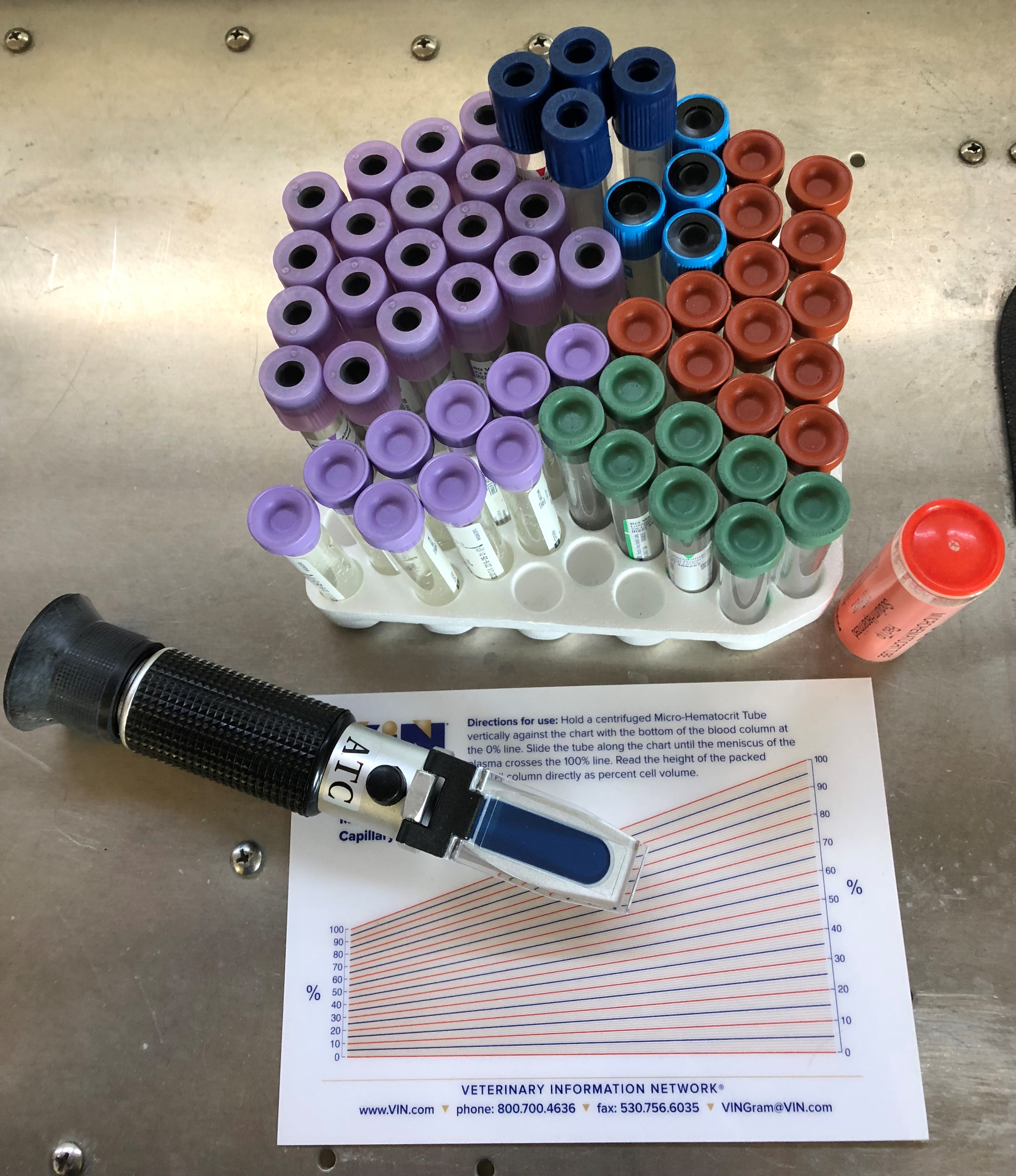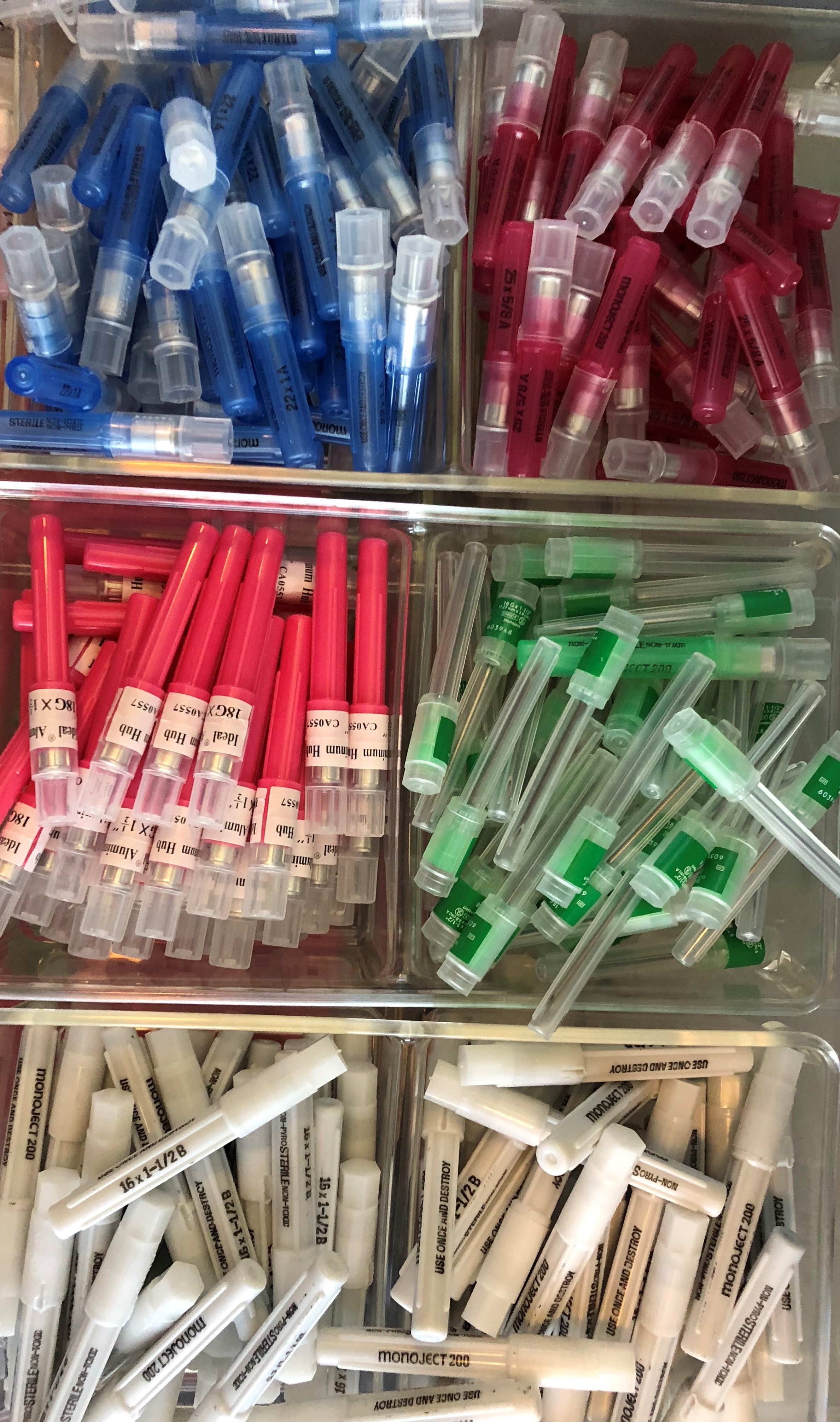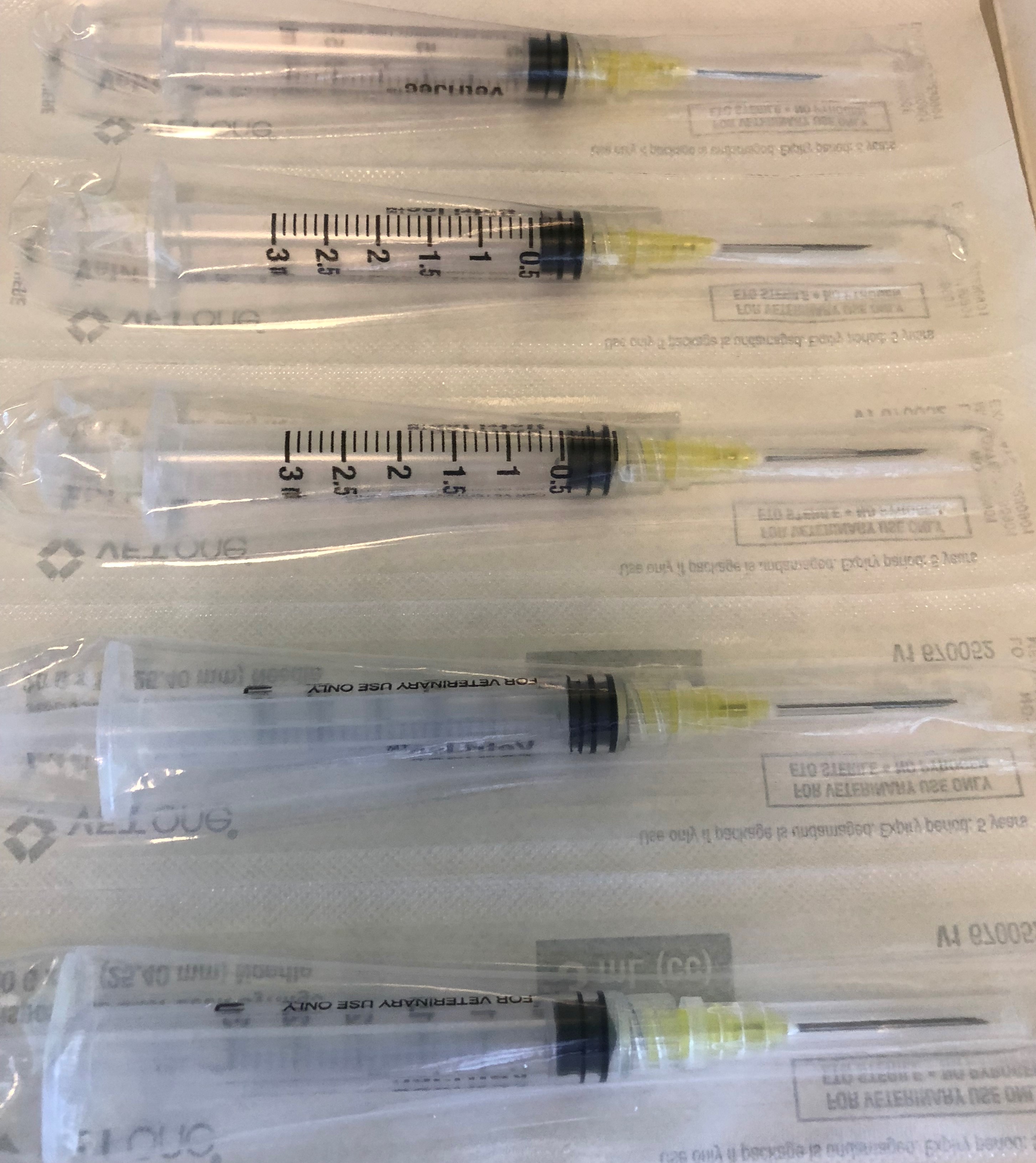Laboratory Testing
Diagnostics, including blood work, fecal counts, cultures, cytology, biopsies, and infectious agent detection assays may be sent to external laboratories for testing. In-house laboratory testing includes red cell percentages (PCV), total protein levels, and urinalysis.



Commonly conducted laboratory tests and what they tell us about a horse:
Red Cell Percentages (aka PCV=Packed Cell Volume): This number tells us the percentage of red blood cells present in the horse’s circulating blood volume. Red blood cells are important transporters of oxygen in the body.
Total Protein: This number tells us how much protein is present per unit of circulating blood. Protein is important for sustaining adequate blood pressure. It can become low in disease states, including gastrointestinal disease, liver disease, kidney disease, and malnutrition.
Urinalysis: Looking at a horse’s urine sample can give us information about multiple metabolic and renal functions and quantify the kidneys’ ability to concentrate urine. Examples of substances measured in urine include glucose, protein, and red blood cells.
Complete Blood Count (CBC): A complete blood count is a blood test that evaluates a horse’s red blood cell counts, white blood cell counts and types, and platelet count. This test is most often used to help diagnose and manage the treatment of ill horses, but it can also be used to evaluate horses who are showing decreased performance. A CBC is also useful as an annual wellness screening test to confirm the presence of healthy cell counts in the horse. Such a test is also useful as a baseline reading; it serves as a valuable reference if the horse gets sick in the future.
Chemistry Panel: A chemistry panel is a blood test that evaluates multiple enzymes in the horse that reflect organ system function. It measures enzymes to reflect liver, kidney, and muscle health as well as electrolytes and protein levels. Similar to the CBC, this test is most often used in horses who are sick or underperforming, but it is very valuable as an annual wellness screening tool and baseline evaluation.
Coggins Test: This blood test is used to detect horses that are positive for Equine Infectious Anemia (EIA), a blood-borne disease that is transmitted by flies. Horses crossing state lines and entering some competitive horse venues may be required to show proof of a negative Coggins test.
Fecal Egg Count: Fecal egg counts quantify the number of parasite eggs identified per unit of manure to give a quantitative evaluation of parasite load in a horse. Fecal egg counts have been very useful in reducing the number of horses who colic from parasites and in managing our use of dewormers in horses effectively. Parasites in horses have shown significant resistance to dewormers in recent years, so it is especially important to understand when and when not to administer a dewormer.
Infectious Agent Assays: There are numerous tests available for infectious agents in horses. Tests may analyze blood samples, nasal swabs, or manure for the presence of or a horse’s response to an infectious agent. Examples of tests available include tests for EPM, Lymes, Anaplasma, Potomac Horse Fever, Equine Influenza Virus, and Equine Herpes Virus.
Culture: A culture is a test where a swab or sample of fluid is evaluated for bacterial growth to determine if there is an infection present. The exact identity of the bacteria present is determined whenever possible, as well as which antibiotics should be most effective against that bacteria. As such, a culture can be a very useful test in selecting treatment for a sick horse. Cultures for fungal agents are also available.
Cytology: Cytology is a test to look at the cells that are present in a fluid sample, such as fluid from a joint, the lungs, or the abdomen. Cytology can also be performed on skin scrapings and ocular swabs.
Biopsy: A biopsy is a sample of a tissue that is submitted to a pathologist for examination. Examples of biopsies that might be taken in the field include skin and muscle biopsies.


